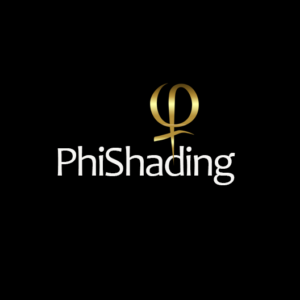PhiShading Permanent Make-up: The Innovative Method for Perfectly Defined Eyebrows

What is PhiShading?
PhiShading is an advanced technique in the field of permanent make-up that combines two procedures: Microblading and Shading. This method is used to add more definition and density to the eyebrows. PhiShading is ideal for those who not only want fine, hair-like lines but also prefer a fuller, more even look with soft shading.
How does PhiShading work?
PhiShading combines two approaches:
- Microblading: Fine, hair-like lines are manually inserted into the skin to enhance the structure and shape of the eyebrows.
- Shading: In addition to the hair strokes, a soft shading is applied between the lines to make the eyebrows appear fuller and more natural. This shading is applied in a dotting technique to create a soft, powdery effect.
This combination creates a three-dimensional effect, giving the eyebrows a richer and more defined look.
Benefits of PhiShading
- Natural Look: Unlike pure microblading, which only simulates fine hairs, PhiShading provides a softer, fuller effect. This adds depth and density to the eyebrows while still looking natural.
- Long-Lasting Results: The results typically last between 12 to 24 months, depending on skin type and aftercare. The shading gradually fades, allowing for periodic touch-ups.
- Flexibility: Since PhiShading focuses on soft shading, the look can be adjusted to trends or personal preferences without making the eyebrows look artificial.
- Time-Saving: No more daily eyebrow drawing – the shape remains perfect permanently, which is ideal for people with busy schedules.
Who is PhiShading Suitable For?
PhiShading is ideal for individuals who:
- Have sparse or patchy eyebrows and want to make them appear fuller.
- Prefer a more defined and even look that goes beyond pure microblading.
- Desire a long-lasting and low-maintenance solution for their eyebrows.
Procedure of the PhiShading Treatment
- Consultation: Initially, a discussion with the cosmetician takes place to discuss the desired eyebrow shape and color.
- Preparation: The skin is cleaned, and in some cases, a numbing cream is applied to make the treatment more comfortable.
- Pigmentation: First, the fine hairs are drawn into the skin using the microblading technique. Then, shading is applied gently between the lines.
- Aftercare: Post-treatment, careful eyebrow care is essential. Redness or slight swelling may occur but usually subsides quickly.
When Should PhiShading Not Be Performed?
1. Active Skin Conditions
- Infections: Skin infections such as herpes simplex, bacterial infections, or fungal infections in the treatment area must be completely healed before PhiShading can be performed.
- eczema, psoriasis, or dermatitis: Active flare-ups of these skin conditions can irritate the skin and complicate healing.
2. Pregnancy and Breastfeeding
During pregnancy and breastfeeding, PhiShading is generally discouraged. Although there are no definitive studies showing risks, hormonal changes can affect healing results, and there is a potential risk of infection, which could be problematic for both mother and child.
3. Blood Disorders
Individuals with blood disorders or those taking blood-thinning medications should avoid PhiShading as the risk of heavy bleeding during and after the treatment is increased. This can affect pigment absorption and prolong healing.
4. Uncontrolled Diabetes
In cases of uncontrolled diabetes, skin healing is delayed and there is an increased risk of infection. This can lead to poorer results and longer healing times, so the treatment should be carried out only when the condition is well-managed.
5. Keloid Formation
Those prone to keloid formation, which is excessive scarring, should avoid PhiShading. Since this technique causes small skin injuries, it could lead to unsightly scarring in such individuals.
6. Allergies to Pigments or Anesthetics
People with allergies to the pigments used or the anesthetic used during the treatment (e.g., lidocaine) should not undergo PhiShading. An allergy test beforehand is important in such cases.
7. Recent Cosmetic Treatments
If another cosmetic or aesthetic treatment (such as laser therapy, peels, or Botox) has recently been performed in the eyebrow area, sufficient time should be allowed for healing and recovery before PhiShading is applied. This reduces the risk of skin irritation or unwanted reactions.
8. Thyroid Disorders (Under- or Overactive)
People with untreated thyroid disorders may have difficulties with pigment absorption. Particularly with hyperthyroidism, skin renewal is often accelerated, leading to faster fading. The treatment should be performed only when the condition is stable.
9. Immune System Weakness or Autoimmune Diseases
Individuals with weakened immune systems or active autoimmune diseases should be cautious. These conditions can lead to delayed healing and increased susceptibility to infections. In such cases, it is advisable to consult a doctor beforehand.
10. Active Acne or Inflammations in the Eyebrow Area
If active acne or inflammation is present in the eyebrow area, the treatment should be postponed until the skin is clear to avoid irritation and further infection.
11. Cancer Treatments
People undergoing chemotherapy or radiation therapy should only have PhiShading once their immune system has stabilized and they have fully recovered. During cancer treatment, the skin is more sensitive and prone to infections.
In all these cases, it is important for clients to disclose their health status before the treatment and, if necessary, consult a doctor to minimize risks and ensure the skin responds well to the treatment.
Conclusion
PhiShading offers the perfect combination of microblading and shading to naturally enhance and define eyebrows. The method is particularly suitable for those who prefer a fuller yet natural look and are looking for a long-lasting solution for their eyebrows. With proper care and an experienced specialist, the results can be impressive and long-lasting.
PhiShading FAQ: Everything You Need to Know
1. What is PhiShading? PhiShading is a combination of two permanent make-up techniques: microblading and shading. Fine hairs are drawn manually (microblading) and soft shading is added (shading) to give the eyebrows more volume and definition. The result is a three-dimensional, natural look.
2. Who is PhiShading suitable for? PhiShading is suitable for people with sparse, patchy, or uneven eyebrows who want more volume and definition. It is ideal for those who prefer a permanently groomed and well-shaped eyebrow without daily drawing.
3. How long does PhiShading last? Depending on skin type and care, PhiShading generally lasts between 12 and 24 months. The pigments fade gradually, so a touch-up is recommended after this time.
4. How does the treatment proceed?
Initially, the desired eyebrow shape is discussed with the client. After slight numbing, pigmentation is performed with fine needles. First, the hairs are drawn, followed by shading. The entire process takes about 2 to 3 hours.
5. Is the treatment painful? Most clients find the treatment minimally painful, as a numbing cream is applied beforehand. Pain perception may vary individually.
6. What should I consider before the treatment? It is recommended to avoid blood-thinning medications (such as aspirin) and alcohol before the treatment. Direct sun exposure or tanning beds should also be avoided to prepare the skin optimally for the treatment.
7. What does aftercare involve? Proper aftercare is crucial following the PhiShading treatment.
Book Appointment Online
You can easily book an appointment through our online booking system. However, we always recommend sending a quick message via WhatsApp or Instagram beforehand.





 +49 17623141510
+49 17623141510  Google Maps
Google Maps